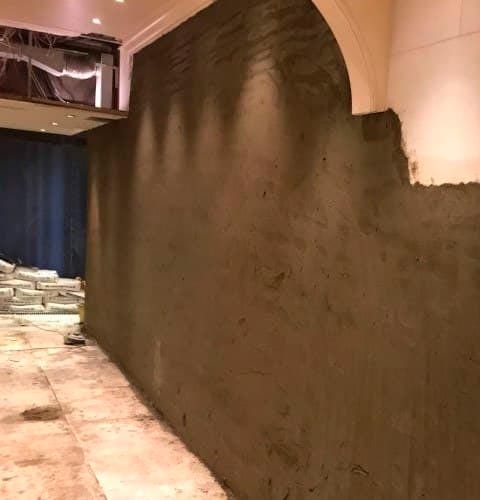 Penetrating damp needs to be treated as soon as it’s spotted to prevent costly property damage and the spread of health-damaging moulds.
Penetrating damp needs to be treated as soon as it’s spotted to prevent costly property damage and the spread of health-damaging moulds.
There a wide range of structural defects which can result in penetrating damp, as we have in our “What Causes Penetrating Damp” article.
This means that the most important part of treating damp is a thorough and accurate survey from professional damp experts. Otherwise, you may pay for damp works that have nothing to do with the damp affecting your property.
Step one: survey the interior and exterior
First, we inspect any visible damp and ask questions about what times the damp occurs, if it’s worse during certain weather and how long it’s been an issue for.
We then carry out a thorough examination of the exterior of the building to find all current and potential points of water ingress, such as cracks in the walls, missing tiles or blocked gutters.
If there are no external causes, we turn our attention to the plumbing and appliances. In attached buildings or flats, we may have to contact your neighbours so that we can survey their property as well.
Step two: seal up the point of water ingress
Treating penetrating damp ranges from quick and easy to time consuming and highly invasive depending on the cause.
Best case scenario: we pull some leaves out of a gutter, reseal a window or install some chimney cowls.
Worst case: we have to strip back walls to find leaking pipes, repoint the entire exterior or replace rotting timbers.
Either way, the Environ team is skilled in every trade required to get a building 100% free from penetrating damp, with a 15-25 year guarantee for all damp works.
Step three: replace and repair damaged materials
No matter the cause, any materials affected by the damp should be removed, which typically involves stripping back damp paint and plaster all the way down to the brickwork and leaving it to dry.
In more severe cases where timbers have rotted, we may need to brace the building to provide extra support while the rotten timbers are removed.
Finally, we apply a special three-part render from Sovereign, a world-class supplier of damp proofing solutions. We’ll then provide you with a guarantee for all works completed.
Never paint over damp, even if the paint is “damp proof”
You should never paint over or re-plaster damp walls without addressing the cause. This is a temporary solution at best, and at worst can lead to severe structural issues as walls, floors and roofs rot away in secret.
We’ve treated properties where damp was patched over for years, spreading the damp further and further until the entire wall is saturated. Sometimes, the entire structure is beyond saving and has to be condemned.
Painting over damp also won’t hide the it from surveyors equipped with moisture metres if you ever want to sell your property.





